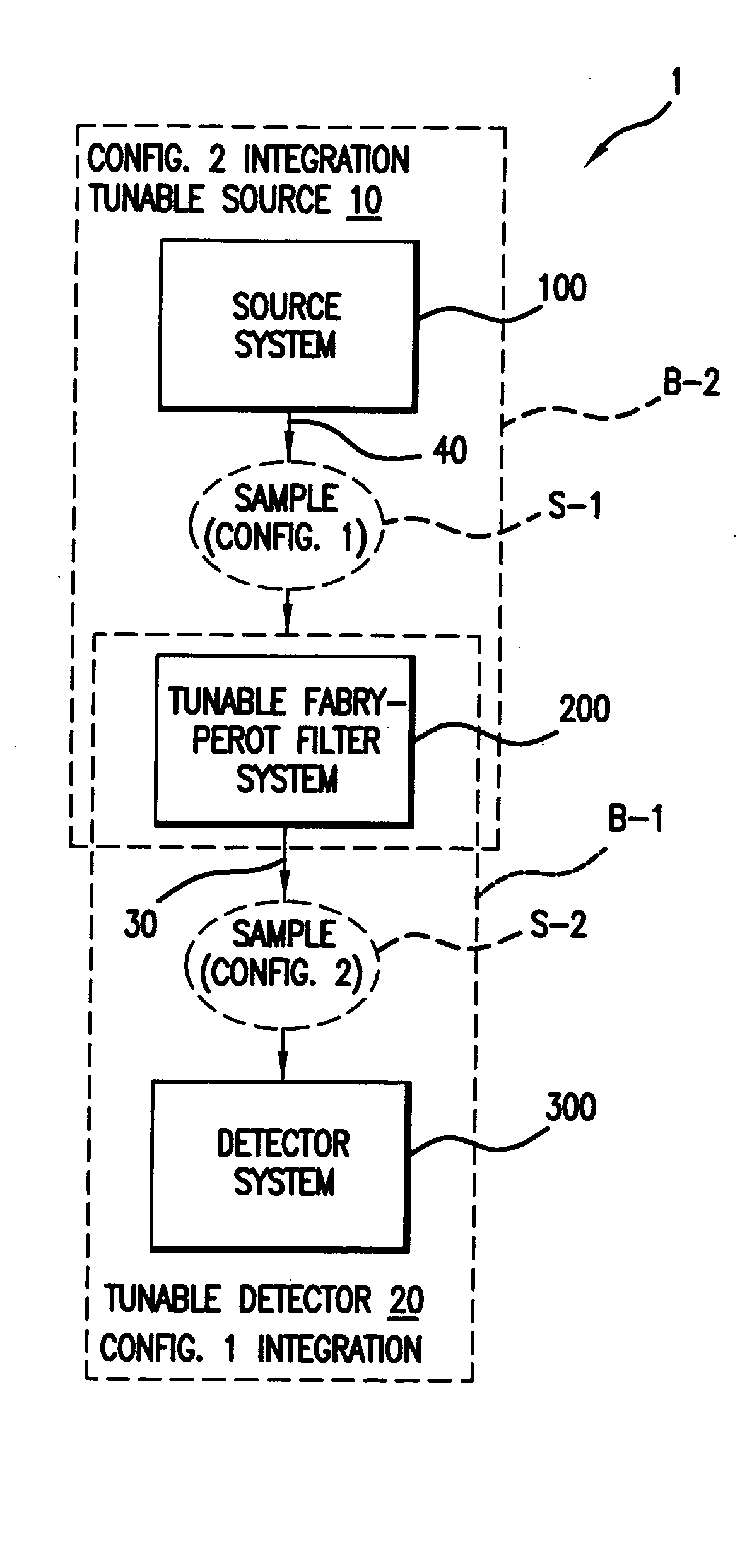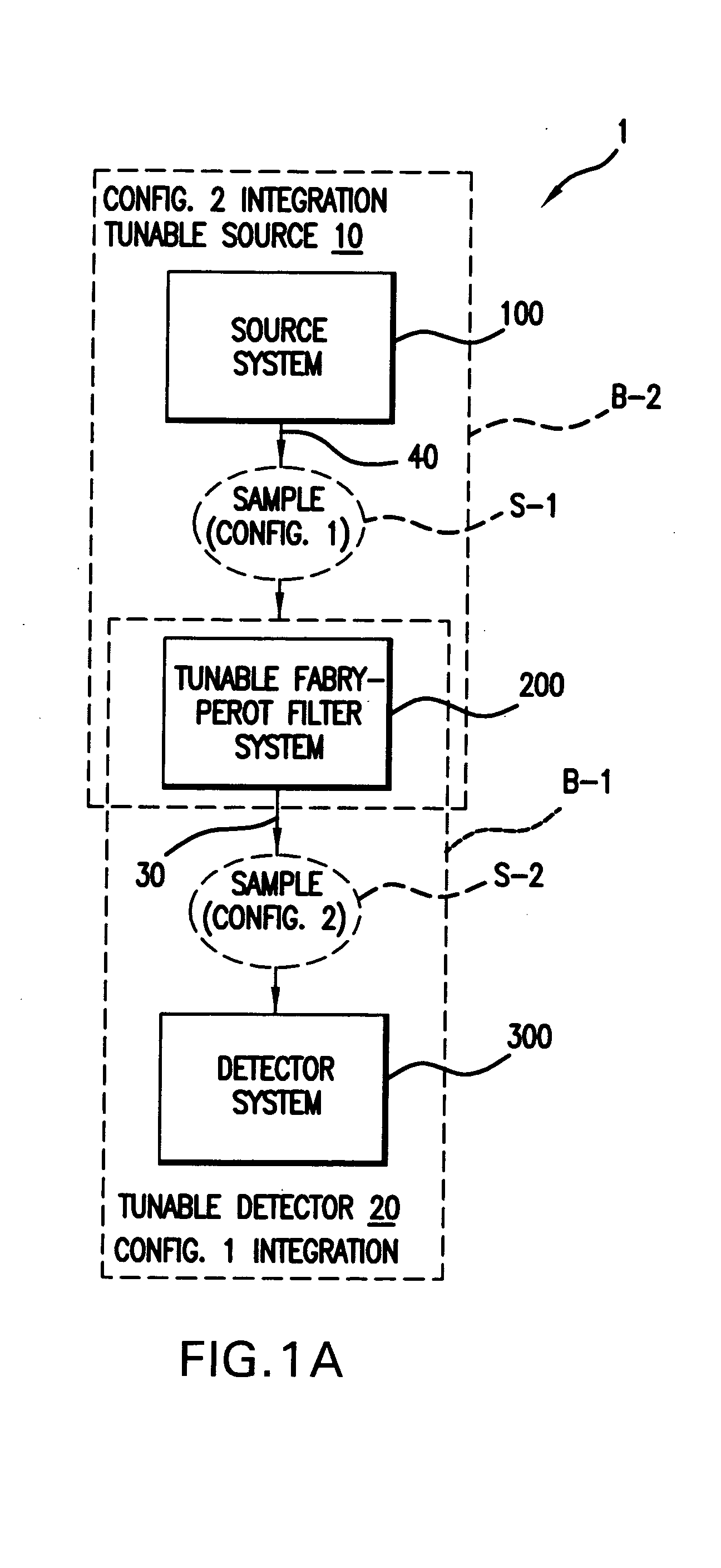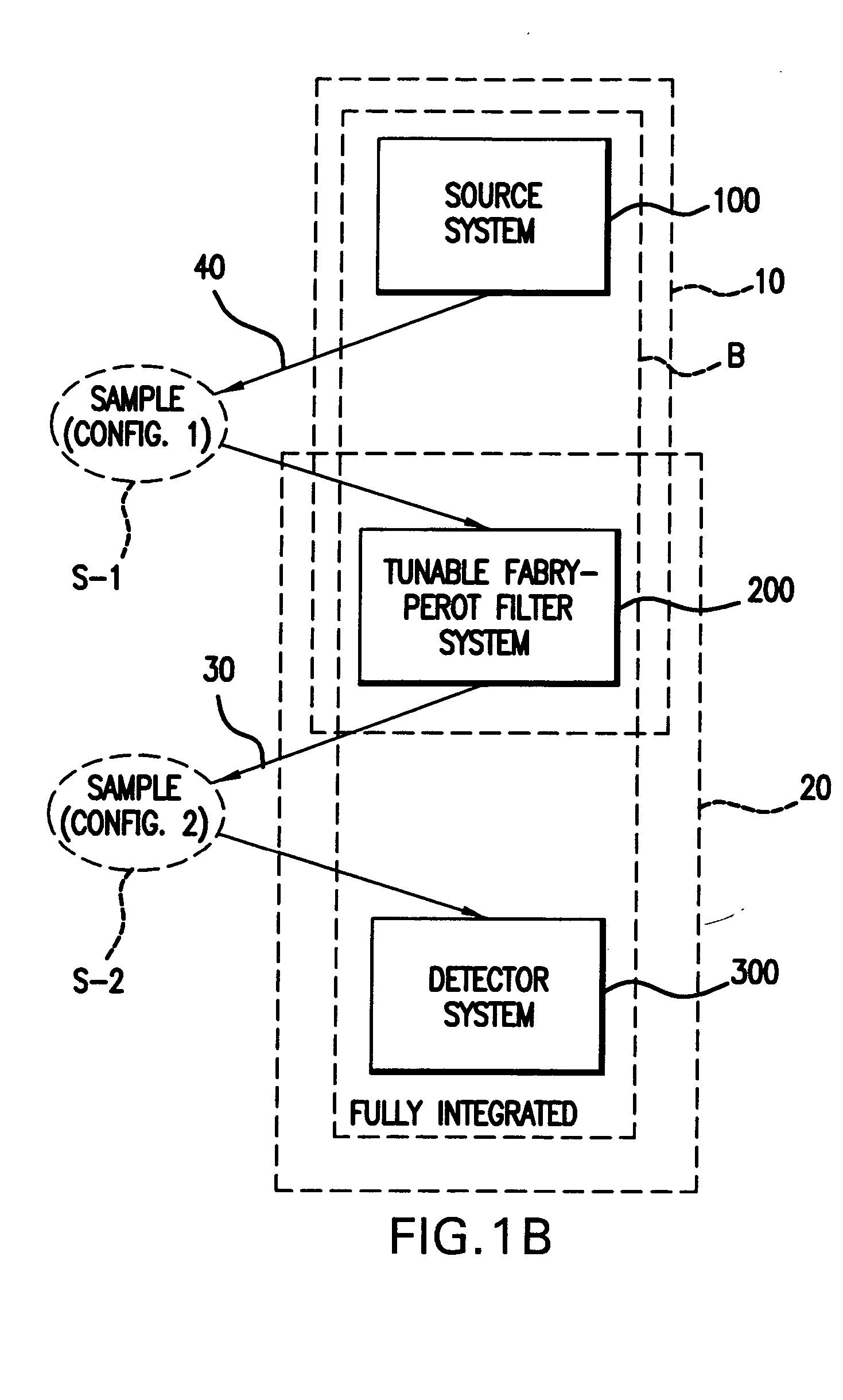Integrated spectroscopy system
a spectroscopy system and integrated technology, applied in the field of optical spectroscopy systems, can solve the problems of poor mechanical stability, large device size, high cost of manufacture of these devices, etc., and achieve the effects of reducing size, increasing stability, and lowering power consumption
- Summary
- Abstract
- Description
- Claims
- Application Information
AI Technical Summary
Benefits of technology
Problems solved by technology
Method used
Image
Examples
first embodiment
[0053]FIG. 2 illustrates the tunable source 10. Specifically, in this embodiment, the bench B-2 holds the tunable Fabry-Perot filter system 200 and the source system 100 on a common planar surface. The generated tunable signal 30 is coupled off of the bench B-2 by an optical fiber 102. In the preferred embodiment, this optical fiber 102 is a single transverse mode fiber. This has advantages in that it renders the tunable signal 30 very stable, even in the event of mechanical shock to the single mode fiber 102.
[0054] The source system 100 is implemented using, in this embodiment, a superluminescent light emitting diode (SLED) 110. The diode 110 is installed on a submount 112. The submount 112 is, in turn, installed on the bench B-2. In the preferred embodiment, the SLED chip 110 is solder bonded to the submount 112, which further includes metallizations 114 to facilitate wire bonding to provide electrical power to the SLED chip 110. Further, the submount 112 is solder bonded to the b...
second embodiment
[0105]FIG. 12B shows an operationally similar tunable optical filter system 10, for the purposes of the present invention. Reference numerals have been used for functionally equivalent parts. The differential between the two designs lies in the design of the detector system 300. This second embodiment utilizes only a single detector 324, 54 that detects both the optical reference and the optical signal. In this illustration, the package is not shown for clarity.
[0106]FIG. 13 shows another embodiment of the tunable detector 20. The signal from the target is transmitted to the detector 20 via fiber 310. A first lens component 316 collimates the light from the fiber. Second lens components 318 couple the light into the tunable filters 116A, 116B of the filter system 200. Third lens components 322 focus the light to the detector system 300.
[0107] This version uses two tunable filters 116A, 1116B, each filtering a portion of the scan band. Corresponding detectors 334A, 334B detect the t...
PUM
| Property | Measurement | Unit |
|---|---|---|
| wavelength ranges | aaaaa | aaaaa |
| distance | aaaaa | aaaaa |
| spectroscopy | aaaaa | aaaaa |
Abstract
Description
Claims
Application Information
 Login to View More
Login to View More - R&D
- Intellectual Property
- Life Sciences
- Materials
- Tech Scout
- Unparalleled Data Quality
- Higher Quality Content
- 60% Fewer Hallucinations
Browse by: Latest US Patents, China's latest patents, Technical Efficacy Thesaurus, Application Domain, Technology Topic, Popular Technical Reports.
© 2025 PatSnap. All rights reserved.Legal|Privacy policy|Modern Slavery Act Transparency Statement|Sitemap|About US| Contact US: help@patsnap.com



